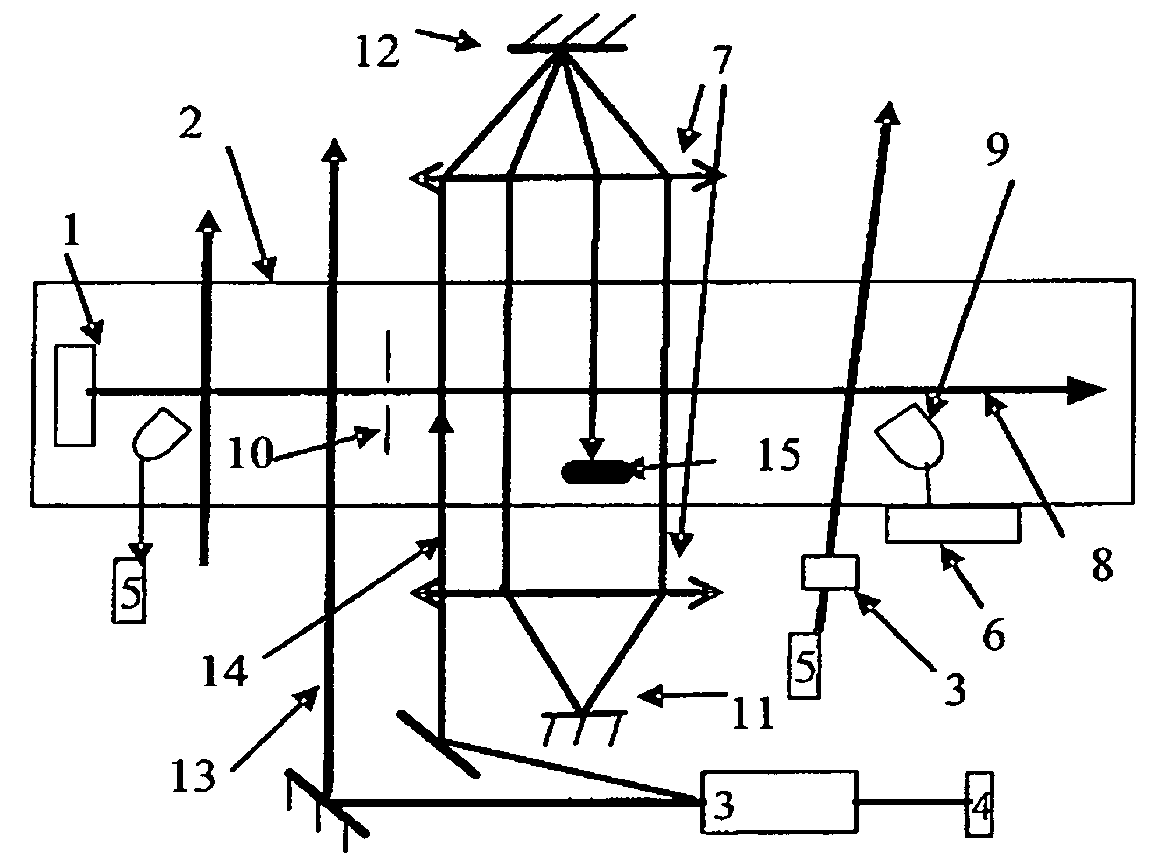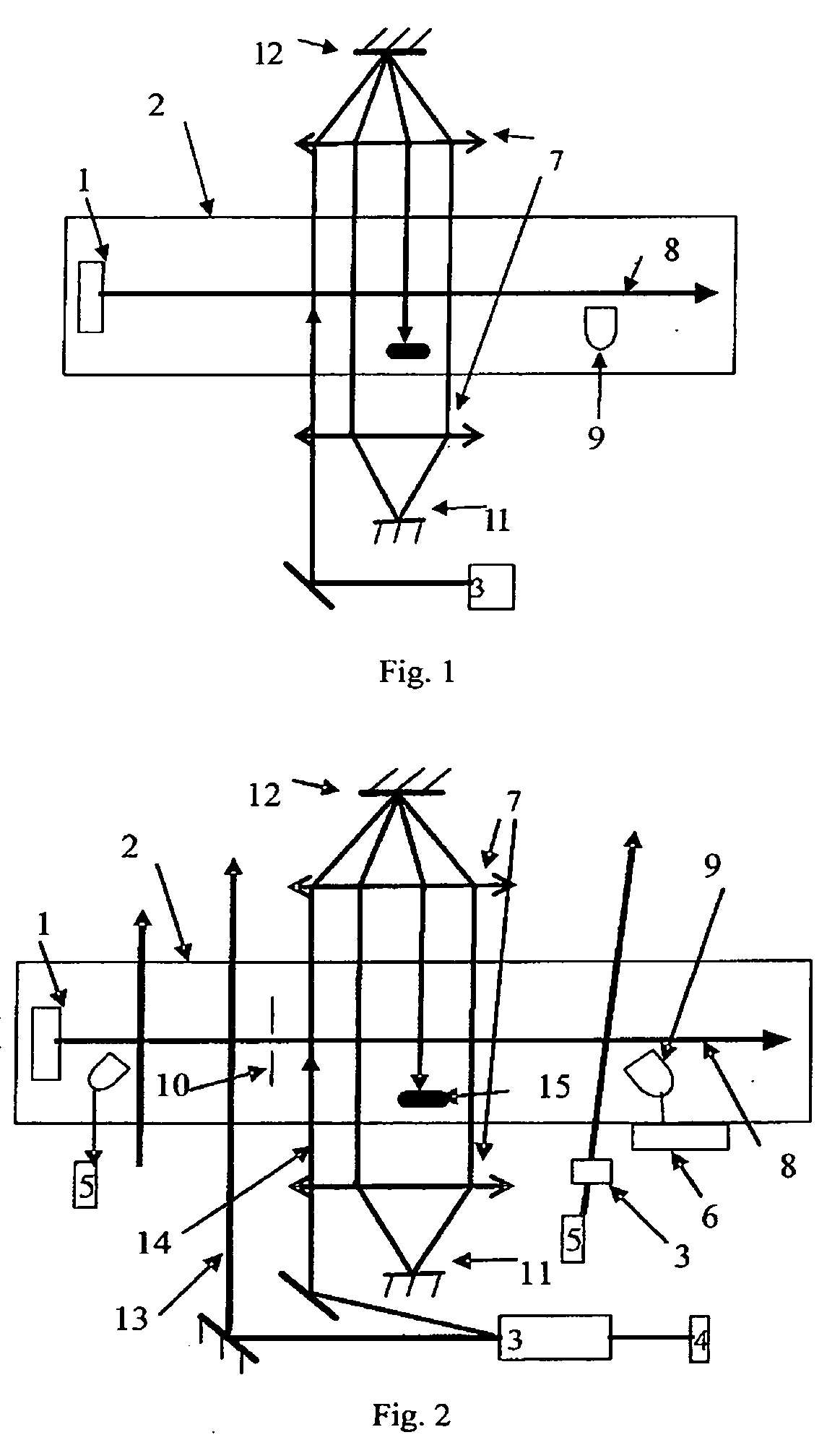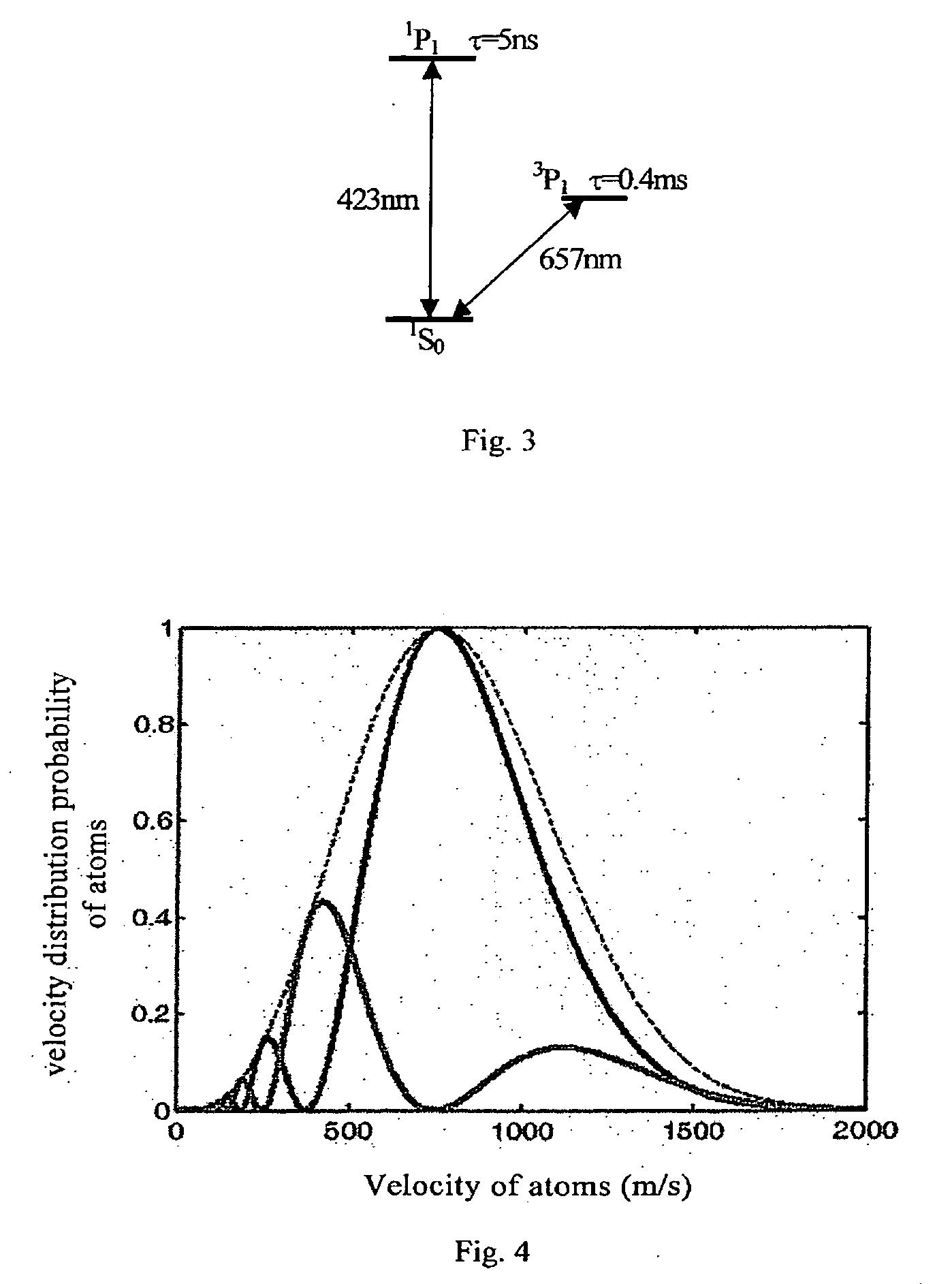Atomic beam optical frequency atomic clock and a producing method thereof
a technology of optical frequency and atomic clock, which is applied in the direction of generating/distributing signals, instruments, horology, etc., can solve the problems of low inability to improve stability, and inability to achieve accuracy that may be achieved, so as to increase the signal-to-noise ratio and improve the detection efficiency of atoms
- Summary
- Abstract
- Description
- Claims
- Application Information
AI Technical Summary
Benefits of technology
Problems solved by technology
Method used
Image
Examples
Embodiment Construction
[0022]The atomic clock at optical frequency based on atomic beam in accordance with the present invention includes the following steps.
[0023]Atomic beam is ejected from a mouth of oven after heating an atomic oven in a vacuum chamber;
[0024]Laser corresponding to frequency of a clock transition transfers particles in the atomic beam from a ground state of the clock transition to an excited state of the clock transition operates in an adiabatic passing mode;
[0025]After interacting with the laser corresponding to the frequency of the clock transition in the form of single field or separate field, the atomic beam passes a signal detection region with a detection laser using electron shelving detection. The frequency of the detection laser corresponds to one strong transition spectral line related to a transition energy level of an atomic clock. After the particles in the atomic beam moves to the detection region and interacts with the detection laser, each of the atoms gives off a photo...
PUM
 Login to View More
Login to View More Abstract
Description
Claims
Application Information
 Login to View More
Login to View More - R&D
- Intellectual Property
- Life Sciences
- Materials
- Tech Scout
- Unparalleled Data Quality
- Higher Quality Content
- 60% Fewer Hallucinations
Browse by: Latest US Patents, China's latest patents, Technical Efficacy Thesaurus, Application Domain, Technology Topic, Popular Technical Reports.
© 2025 PatSnap. All rights reserved.Legal|Privacy policy|Modern Slavery Act Transparency Statement|Sitemap|About US| Contact US: help@patsnap.com



